I've mentioned UAP/NHI a few times on this Substack in a low-key way. Now it's time to go hard.1 I never thought it would happen, but the subject is now almost respectable. And that's a good thing, because my guess is that over the next few years, people are going to need get up to speed on the subject. There's a big learning curve — bigger than most people probably imagine. Hopefully by the end of this article we'll have an idea of how that came to be so.
But maybe some readers aren't familiar with those acronyms. They're the new "official" designations for UFOs and aliens. UAP = unidentified anomalous phenomena. NHI = non-human intelligence.
Strange as it may seem, we probably wouldn't be where we are today without Tom DeLonge, pop-punk skater/superstar of the band Blink 182. Through a canny leveraging of his fame, influence, and obsession with UFOs, he set in motion events that led to a famous New York Times piece exposing the existence of a DOD UAP program (AAWSAP/AATIP) in 2017 and culminated (so far) in the 2023 congressional testimony of David Grusch, who stated that the United States is in possession of NHI craft, NHI bodies, and has been engaged in reverse-engineering programs of questionable legality for decades, hidden behind waived unacknowledged special access programs and corporate secrecy.2 Grusch had been tasked by the UAP Task Force to find these programs, and he reportedly did.
As an introduction to the current state of affairs, I recommend watching Australian investigative journalist Ross Coulthart's keynote speech at a recent conference by the Scientific Coalition for UAP Studies (SCU):
Coulthart joins a growing list of journalists taking the subject very seriously, including Leslie Kean & Ralph Blumenthal, Tucker Carlson, Michael Shellenberger (Public), Matt Walsh (Daily Wire), Marik von Rennenkampff (The Hill), Christopher Sharp (Liberation Times), Matt Ford (The Good Trouble Show), Matt Laslo (Ask a Pol), and of course, the O.G. George Knapp.
How did we get here?
I've already introduced the term "worldview warfare," the German term for which was translated into English as "psychological warfare" post-WWII. Enter "Overton window hacking." Or perhaps "Hallin sphere engineering." Both terms work, but the central idea is the deliberate shaping of which elements make for acceptable discourse.
The Overton window refers to political policy, categorizing ideas on a spectrum from unthinkable to actual policy. For instance, you will never find any member of the American political class arguing for a strategic partnership with North Korea or the Taliban. Between these extremes are ideas that can at least be mentioned in debate, even if they will never realistically be considered viable as policy options. Others are rigorously debated as viable (if contentious) options.
As Wikipedia tells us, Overton's colleague Joseph Lehman wrote:
"The most common misconception is that lawmakers themselves are in the business of shifting the Overton window. That is absolutely false. Lawmakers are actually in the business of detecting where the window is, and then moving to be in accordance with it."The window shifts when those outside of it persuade enough people to move the idea from the unthinkable or radical into the acceptable or even sensible.
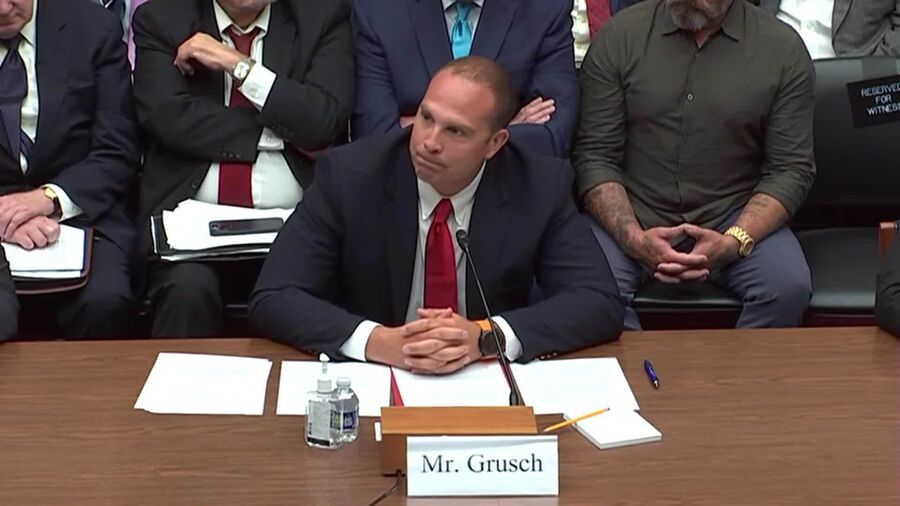
Hallin's spheres, by contrast, describe similar boundaries within media discourse: the sphere of consensus, surrounded by the sphere of controversy, surrounded by the sphere of deviance. Up until 2017, UAP almost exclusively fell within the last sphere. True, there have always been a few open and disagreeable journalists taking the topic seriously, but by and large it has been treated by "serious" journalists as just plain kooky and worthy only of ridicule and contempt.3 To quote Wikipedia again (a source that upholds the sphere of consensus to a pathologically deviant degree):
Hallin argues that in the sphere of deviance, "journalists also depart from standard norms of objective reporting and feel authorized to treat as marginal, laughable, dangerous". They either avoid mentioning or ridicule the controversial subject as outside the bounds of acceptable controversy; and they censor the individuals and groups who are associated with it.The journalists and media figures listed above are an historical anomaly. But that wasn't always the case. For years starting in the late 1940s you could find serious stories about "flying saucers" and "UFOs" in practically every newspaper. But something changed in 1953. The CIA convened the so-called Robertson Panel which came to a predetermined conclusion that UFOs were bunk and made the following recommendation, which in retrospect has guided the last 60-plus years of official worldview messaging:
The Panel's concept of a borad [sic] educational program integrating efforts of all concerned agencies was that it should have two major aims: training and "debunking". ... The "debunking" aim would result in reduction in public interest in "flying saucers" which today evokes a strong psychological reaction. This education could be accomplished by mass media such [as] television, motion pictures, and popular articles. Basis of such education would be actual case histories which had been puzzling at first but later explained. ... It was felt strongly that psychologists familiar with mass psychology should advise on the nature and extent of the program.
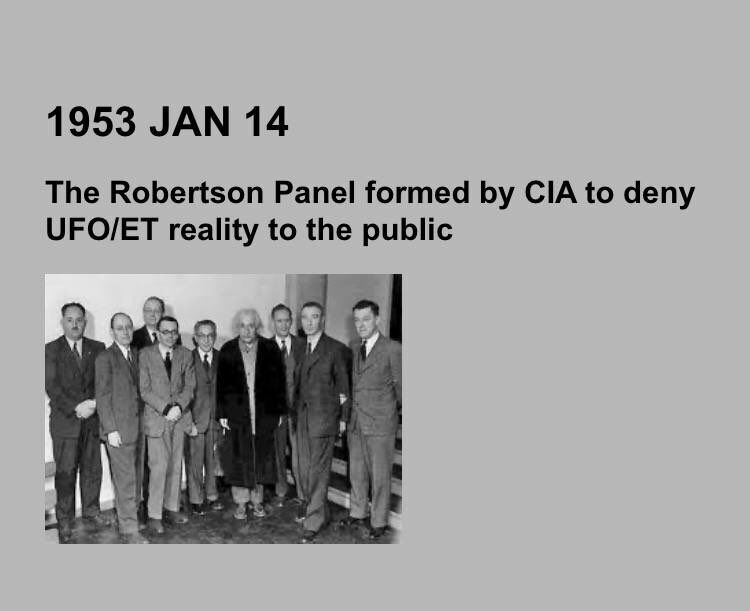
To anyone with even a passing familiarity with a typical sighting report (or their own personal sighting), this is obvious. There is a point at which conventional explanations approach a probability of zero. And yet despite 70+ years of such reports worldwide — tens of thousands of them at the very least — many in politics, media, and the general population still fall for intellectual sleight of hand such as the above.
Official denial and ridicule from all nodes of consensus culture, combined with the obvious reality of the phenomenon (even if its origins remain mysterious), led to something very curious developing over the decades. Ignored reality does not simply disappear. It has to "go" somewhere. What we have witnessed since 1953 is the deliberate creation of a perceptual or worldview bubble, the boundary of which has been practically impervious to mainstream penetration. This process, and the maintenance of the resulting boundary, has been aided by dishonest journalists and seemingly inexhaustible debunkers devoted to enforcing the boundary like their lives (or livelihoods) depend on it. In the past we had the Donald Menzels5 and Philip J. Klasses (both of whom had close ties to the intelligence community).6 Today we have the Mick Wests and Steven Greenstreets.
What otherwise could and would have been a natural shifting of humanity's collective worldview to accommodate the reality of UAP was forced into a kind of hermetic subculture, developing parallel to consensus worldviews. Those on the outside aren't even aware it exists, and if they see some hints of its existence, tend to assume it's all a bunch of hokum and don't bother to look any closer. If they do happen to look closer, the material is so far outside their current understanding of the world that they dismiss it as impossible and conclude that the author must either be crazy or trying to pass of fiction as non-fiction.
These widely divergent ontologies are now converging. And barely anyone is noticing.
Overton's Wormhole / Hallin's Hypersphere
The subculture I'm talking about wasn't born fully formed like some Greek god with Lovecraftian characteristics. Since the very beginning, UAP have been weird, naturally placing the subject outside the sphere of consensus. Even among those who embraced the mystery and attempted to solve it, it took decades for the wider field to assimilate its weirder and more mind-boggling aspects (like so-called "consciousness" effects) into the growing "deviant" consensus. The history of ufology reflects this.
Early newspaper reports and research focused almost exclusively on sightings, usually distant sightings — those experiences most amenable to prosaic explanations or forced debunking. Anomalous lights in the sky. "Mystery fireballs." Star-like objects moving like intelligently piloted craft. And yes, "flying saucers" — metallic, disc-shaped objects moving in ways that defied known flight technologies of the time. Add to that metallic spheres, "cigar-shaped" objects, and numerous other morphologies reported by military men, pilots, police officers, professionals, and regular citizens.
Landings — reports of saucer- or egg-shaped craft, for instance, sighted on land — were considered a bit too much even for many ufologists. "I like my flying saucers in the air, thank you very much." Occupant reports were taboo until the 1960s or thereabouts. It took an additional couple decades for claims of being taken aboard one of these things to gain widespread acceptance.
J. Allen Hynek, astronomer debunker turned proponent, famously categorized these types of reports as "close encounters" of the first, second, and third kinds (corresponding to up-close sightings, those with physical effects, and occupant reports). Steven Spielberg brought the terminology into pop culture in 1977. Others have added CE4 (abduction) and CE5 (communication) to the list. Needless to say, the higher the CE number, the further it will fall outside the sphere of consensus, the less likely it will go mainstream, and the more likely it will further enforce the worldview boundary by repelling outsiders.
Nowadays you can have a conversation with PhD-level UAP researchers and find yourself wondering if you've stepped into a sci-fi script. The 1980s introduced or incorporated ideas like crash retrievals and reverse engineering, covert agreements between government and NHI, cattle mutilations, underground bases, and alien abductions. As already mentioned, most of these elements were present from the very beginning but rejected as being just too far out to take seriously even by ufologists. Nowadays you can find academic discussions debating the merits of extraterrestrial, cryptoterrestrial, extratempestrial, and interdimensional hypotheses, as well as theoretical physics discussions debating possible propulsion technologies to account for observed capabilities.
The further this worldview diverged from the consensus, the harder a reconciliation became. Asking someone with no prior familiarity with the topic to accept an occupant report (let alone anything higher on the weird scale) today is arguably harder than it was for someone in the 1940s to accept a distant flying saucer. And all the while ufology was going down these rabbit holes, official culture was stuck in place believing the most facile and lazy debunking efforts of the intel community, their collaborators, and their useful idiots.
Here's how it works.
Maintaining and Breaking the Barrier
Reading case after case, the story is almost always the same. It goes something like this: "Before I saw that damn flying saucer, I thought the whole subject was crazy. I used to make fun of anyone who said they saw one. But then, there it was. Now I know it's real. I know what I saw." I don't know the precise statistics, but my impression is that this is true for perhaps a majority of witnesses. The only thing that changed their minds was seeing it for themselves.
Of course, direct witnesses aren't the only ones whose minds can be changed. There have been plenty of scientists drawn to the subject based purely on the evidence. I have in mind legends like physicist James E. MacDonald and contemporary historian Richard Dolan. Carl Jung, incidentally, was also fascinated by the topic and, contrary to popular opinion, ruled out a purely psychological explanation.
But by and large it is personal experience that tears down the worldview barriers and permits entry into "Hallin's Hypersphere" by way of the "Overton Wormhole." Once you gain entry, it's very hard to leave, and chances are you won't be able to take anyone with you. This fact is shamelessly weaponized by the debunkers. Until recently it was common to hear mid-wit scientists say things like "no credible scientists take this subject seriously." Except that there have always been credible scientists taking the subject seriously, both in the top-secret and civilian worlds. There's an unspoken rule, though. Any scientist once considered credible automatically loses their credibility when they make their interest public. So the debunkers' paralogism/paramoralism has the advantage of always being true. It doesn't matter how world-class in your field you were before. Publicly enter the UFO debate and your credibility is shot.
The message is clear. Even UAP witnesses understand the game. They know that if they go public they will be called crazy, their mental health will be brought into question, they may lose their jobs, and their friends and family members may not believe them. This is the reason so many scientists kept their interest in the subject secret for decades.7 (But that's changing too. Witness the above-mentioned SCU and the Sol Foundation, for instance.) And it's is why so many witnesses never bother going public. Many don't even tell their closest family members.
Another debunker tactic comes straight out of the Robertson Panel and is currently utilized by AARO. It follows from their "training" recommendation:
The training aim would result in proper recognition of unusually illuminated objects (e.g., balloons, aircraft relfections [sic]) as well as natural phenomena (meteors, fireballs, mirages, noctilucent clouds).The term "flying saucer" was too specific; too many sightings involved morphologies that weren't disc-shaped. "Unidentified flying objects" solved that problem at the expense of specificity. (The same goes for "UAP.") However, "UFO," while general enough to encompass both flying saucers and misidentified seagulls, is also general enough that the debunkers can get away with suggesting that all unidentifieds could be identified with enough data. Bye bye, flying saucers.
To the uninitiated (i.e., those who have never seen a UAP for themselves or familiarized themselves with the evidence), this might work. To those who have had their worldview blown open by an actual sighting, it's laughable. There's no mistaking a flying saucer (or featureless matte black triangle, Tic-Tac, metallic sphere, etc.) demonstrating positive lift, instantaneous acceleration, right-angled turns at hypersonic velocities, and/or lacking any propulsion signature for a wayward birthday balloon or swamp gas. (By the way, if you're tired of the term "gaslighting," start using "swamp-gassing" instead.)
But if that segment that takes official pronouncements and consensus seriously gets the impression that all UAP reports are just distant jets, optical illusions, seagulls, and sensor errors, then it's mission accomplished. Such explanations provide a suitably "plausible" rationalization to uphold the common worldview without any unnecessary ontological shock. Debunkers use such "reversive blockades" to convince onlookers that the witness didn't see what he knows he saw. It works like a charm.
Disclosure Recapitulating Ufology
So after around around 65 years of disinformation, official culture was still stuck in the "must've been a stray pelican mistaken for a thirty-foot domed disc hovering twenty feet above the neighbor's house" mindset while ufologists were debating whether the beings operating the damn thing were human, alien, AI, ultraterrestrial, or some other exotic unknown. That's where we were in 2017 when the AATIP story broke and DeLonge launched To The Stars Academy with the former head of AATIP, Lue Elizondo.
At the time, UAP researchers had some criticisms of how TTSA framed the controversy. But in retrospect it's pretty clear what they were doing. Having reverse engineered the Overton/Hallin history of ufology, they were putting the managerial class and general public through a time-compressed recapitulation of the process, starting from the beginning. It went something like this:
- The U.S. military is regularly encountering unknown aircraft demonstrating remarkable capabilities outclassing our state of the art. Maybe they're Russian, Chinese, or something "other," but regardless, it's a national security threat that needs to be taken seriously.
- Actually, they're probably not Russian or Chinese. They're encountering them too, and are just as puzzled.
- Oh, yeah: "The United States government is in possession of exotic material" (i.e. UFO debris).8
- Then came Grusch: world governments have had crashed UAP in their possession since at least the 1930s, some of these craft have contained non-human bodies, defense contractors have been studying and reverse engineering the tech in special access programs without congressional oversight, the U.S. and world public have been subject to a decades long disinformation campaign, the U.S. has been engaged in a reverse-engineering cold war with Russia and China, and there may have been agreements of some sort between government and NHI.
It was actually smart, and arguably the only way for it to work. If the collective worldview has been artificially stuck in the late 1940s, approach the situation as if it were the 1940s. Take them through the same stages ufology went through over the decades. And it has worked. In just seven years, an unprecedented (but still small) number of the American elite class (government and media) have largely assimilated about 30 to 40 years of ufology. Some aspects are firmly within the Overton window of actual policy. Others are currently within the Hallin sphere of controversy — not yet consensus, but the subject of serious debate. (For example, the 2024 NDAA included draft legislation that would have given the U.S. government eminent domain over any non-human technology or craft in the possession of private citizens or corporations. That provision, among others, got axed in conference, however. Wonder why.)
As for how this was possible in such a short time, it's simple. Top-ranking senators, congressmen, and staffers were given what UAP studies never had: evidence, in the form of testimony (which included, as far as I can tell, documents, photos, and video; names, dates, and locations) from dozens of the people who have access to this data as part of their participation in the relevant special access programs.
A Third Consensus
There's a third group implicit in all of the above: the "insider" or "black projects" world itself. If UAP research went dark in the 1940s and 1950s, then another hermetic consensus must have developed there too. It presumably doesn't suffer from many of the drawbacks of civilian UAP studies, which is a hall of mirrors, uncertainty, infighting, and gargantuan egos (not to mention delusions, hoaxes, and deliberate disinformation).
The boundary of the civilian UAP "Hallin hypersphere" may have been historically impervious to the mainstream, but it is still semi-permeable. Anyone can access it if they really want to. What they won't find there, however, is anything like solid proof: no intact craft, no bodies, no archive of gun camera footage, FLIR footage, radar tracks, AFOSI investigations, research reports, etc. The UAP worldview may be hidden in plain sight behind a screen of "crazy," but the black UAP worldview is hidden under layers of NDAs, information silos, and "top secret/sensitive compartmented information" clearances and "need to know."
The black world has its own problems, however: primarily compartmentalization. It's impossible to know who knows what, and many of the people working in these programs only have a sliver of the big picture. They aren't allowed to collaborate with people in the same program researching different slivers and they have no idea how their piece relates to other, perhaps similar slivers in parallel programs. Like the godlike sphere in Flatland, David Grusch had the advantage of peering down into these various compartmentalized silos and thus being able to put many of the pieces together.
Elements of the U.S. legislature have been given a degree of access to such information. They have seen enough to be convinced the subject is serious, that legislation dealing with it is sensible, and that more investigation is prudent. The ICIG deemed Grusch's allegations to be "urgent and credible." And so far, from what he has been permitted to say publicly without violating his security oath, what he says confirms large parts of the overall picture UAP studies has developed over the decades.
So let me repeat what I wrote above:
What otherwise could and would have been a natural shifting of humanity's collective worldview to accommodate the reality of UAP was forced into a kind of hermetic subculture, developing parallel to consensus worldviews.It's about 70 or 80 years too late.
These widely divergent ontologies are now converging.
So far there is no indication that the "black world" will willingly go along with this process. UAP footage is more over-classified than it was even seven years ago. AARO is a dumpster fire. It's also up in the air how far Congress will pursue the issue, or if they will ever make public with what they learn. (They may be satisfied being read in for themselves and retaining current classification rules.) But however it turns out, the next year is sure to be interesting. My prediction is that "disclosure by recapitulation" will continue. We will see more claims of UAP in possession of U.S. defense contractors and agencies, including firsthand testimony. And the stories will get even weirder.
The main problem is that as this trend continues, the public will be largely left in the dark. Just as social media is polarized, I don't see any widespread widening of the Overton Wormhole in the immediate future to bridge the gap between worldviews. People are mostly already in either the mainstream camp or the UAP camp. Aside from a few of the journalists mentioned above, alternative media has mostly dropped the UAP ball. Whatever otherwise consensus-breaking views they may have, they're firmly in the mainstream when it comes to UAP. And until those still in the mainstream get to see what the ranking Senate and House members and staffers are seeing, many otherwise astute people will continue to think "it's all a psyop."9
But that said, this might be the perfect time — and the only time — for this gamble to succeed.
Secular Cycles
The late 1940s or 1950s would have been the perfect time for "full disclosure." As Peter Turchin demonstrates, this period was one of two cyclical high points in American history, a time when the U.S. was its most stable politically, economically, and psychologically, with historically unprecedented quality of life for ordinary Americans and a strong political consensus. Whatever the truth is, the American public probably could have handled it — at the very least they could have handled more than they got.
Unfortunately, it was probably these features that also made it impossible for anything like disclosure to happen then. People trusted the authorities, so when Air Force intelligence showed up and either implored or threatened them to keep their mouths shut, they did so. Insiders were less likely to break ranks or form factions against the party line. And there was probably a great hesitation to do anything to rock the boat of stability.
Not so today. Western society (not just the U.S.) is cresting a watershed of political instability and crisis. Political polarization is at an all-time high, trust in leaders at all-time lows, and intra-elite competition is rampant. That's to say nothing about the precarious geopolitical situation. This environment fosters the development of political factions and defectors from the consensus first developed in the 1950s. It creates the conditions for black swan events. If there were ever a time for a radical shift in worldviews, now is probably it.
That's not to say it will happen, just that if it were to happen, it would probably be during a time like this. It's always possible other events will intervene. Either way, enjoy the show.
Resources:
Some Substacks:
- Christopher's Substack by Christopher Mellon
- Everyday Occurrences by Ryan Graves
- Nick Cook's Rogue Icons by Nick Cook
- ᴋʟᴀᵾs by ᴋʟᴀᵾs
- GΔRRΞTT by GΔRRΞTT
- JDMadden's Newsletter by Jim Madden
- Life in Jonestown by Billy Cox
- The UAP Register by Dustin Slaughter
- The Cryptoterrestrial Hypothesis
- The Extraterrestrial Hypothesis
- The Ultraterrestrial Hypothesis
- The Jinn Hypothesis
- The Extratempestrial Model
- Leslie Kean's UFOs: Generals, Pilots, and Government Officials Go on the Record (2011)
- Diana Walsh Pasulka's American Cosmic: UFOs, Religion, Technology (2019)
- Ross Coulthart's In Plain Sight: An Investigation into UFOs and Impossible Science (2021)
- James Lacatski, Colm Kelleher, and George Knapp's Skinwalkers at the Pentagon: An Insiders' Account of the Secret Government UFO Program (2021)
- Richard Dolan's UFOs for the 21st Century Mind: The Definitive Guide to the UFO Mystery (2022)
- James Lacatski, Colm Kelleher, and George Knapp's Inside the US Government Covert UFO Program: Initial Revelations (2023)
- Diana Walsh Pasulka's Encounters: Experiences with Nonhuman Intelligences (2023)
- Robert Powell's UFOs: A Scientist Explains What We Know (And Don't Know) (2024)
- Luis Elizondo's Imminent: Inside the Pentagon's Hunt for UFOs (in press)
- Especially after Mark Bisone dropped "Devil Worshipping Aliens From Dimension X."
- USAPs and WUSAPs (and their equivalents in the intel community and DOE) are only known to specifically authorized individuals (on a need to know basis) and by law only need to be reported to appropriate congressional committees or their chairpersons and ranking members (WUSAPs can be reported orally). Apparently even these requirements are skirted by only reporting cover programs, thus leaving the Gang of Eight in the dark as to their true purpose.
- The best treatment of media and UFOs is Terry Hansen's The Missing Times: News Media Complicity in the UFO Cover-up (2000).
- This is self-evidently the case. The less specific data, the easier it is to conclude that it "could have been anything." See Christopher Mellon's review of the report: "The Pentagon's New UAP Report Is Seriously Flawed."
- Menzel pretended for decades to be just your average skeptical astronomer. It turns out he had a very high security clearance (and has been rumored since the 1980s of being a founding member of the original UFO control group). He's also responsible for the Menzel Gap.
- Klass boasted as "personal references" Bobby Ray Inman (former director of the NSA and deputy director of the CIA and DIA) and Daniel O. Graham (former director of the DIA and deputy director of the CIA).
- According to the rumor mill, you can't throw a rock in Huntsville, Alabama, without hitting an aerospace engineer with a private interest in UAP.
- This aspect of the narrative goes back to the beginning: Roswell, 1947. It was far from the only such account. Just a few years later journalist Frank Scully published details he received from eight sources in Naval Intelligence, Wright-Patterson, and Lockheed about a crash in Aztec, NM. His book was unfairly debunked and subsequently ignored for decades. Ryan Wood has collected 104 potential cases of varying quality in his book Majic Eyes Only (2024). Grusch has suggested the true number is somewhere in the double-digits.
- I can't really blame them. But I can blame them for not showing any real interest. Either way, a multi-decade psyop (whether pro- or anti-UAP) is a huge story.
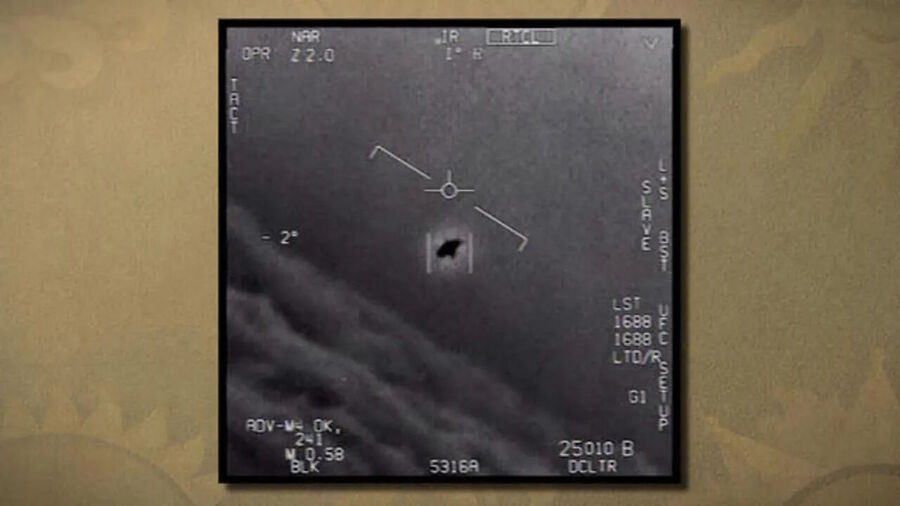

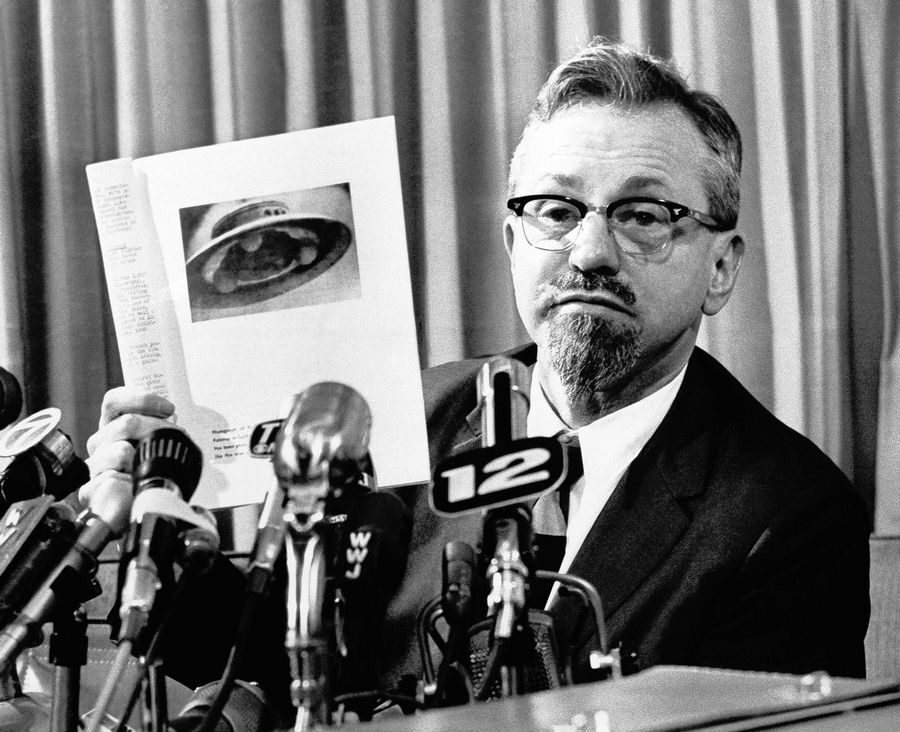
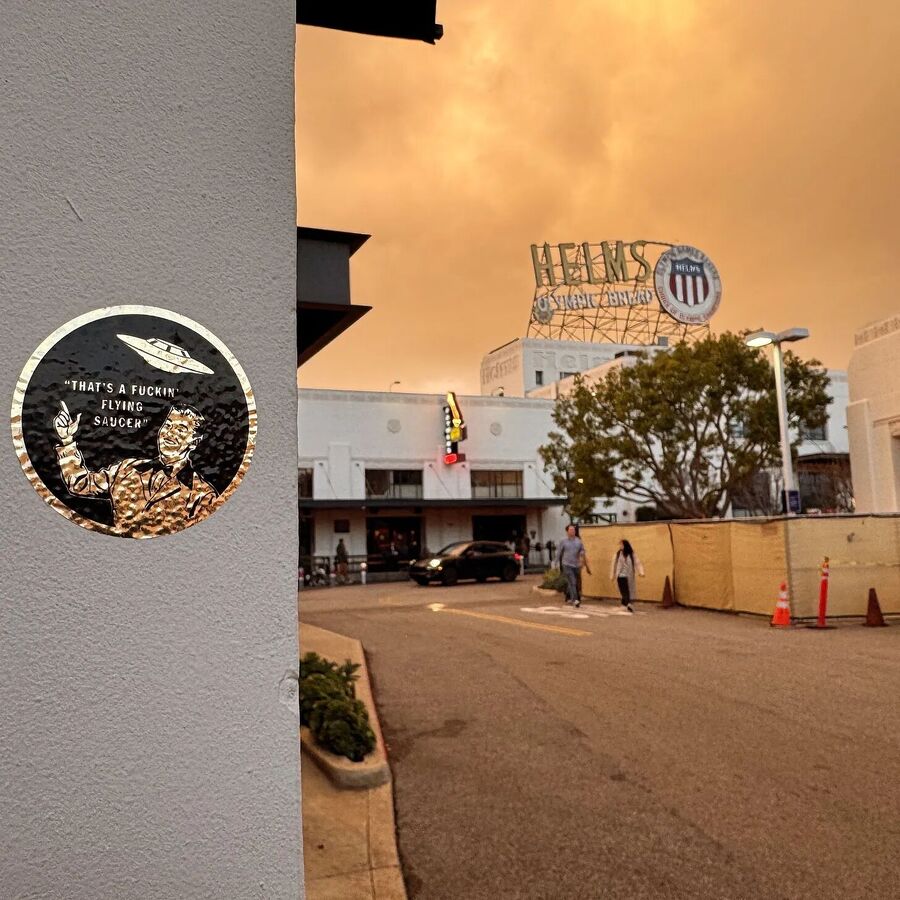


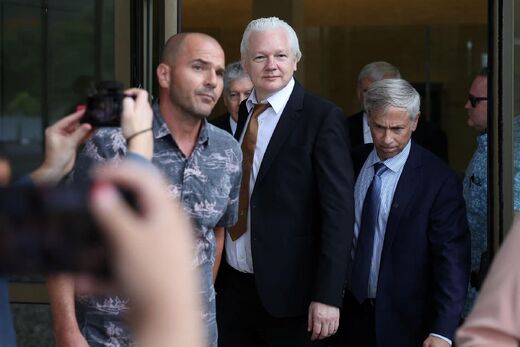
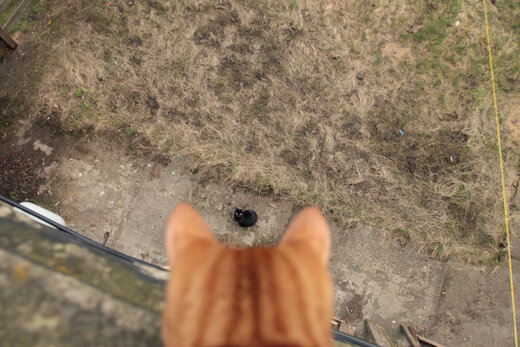
Reader Comments